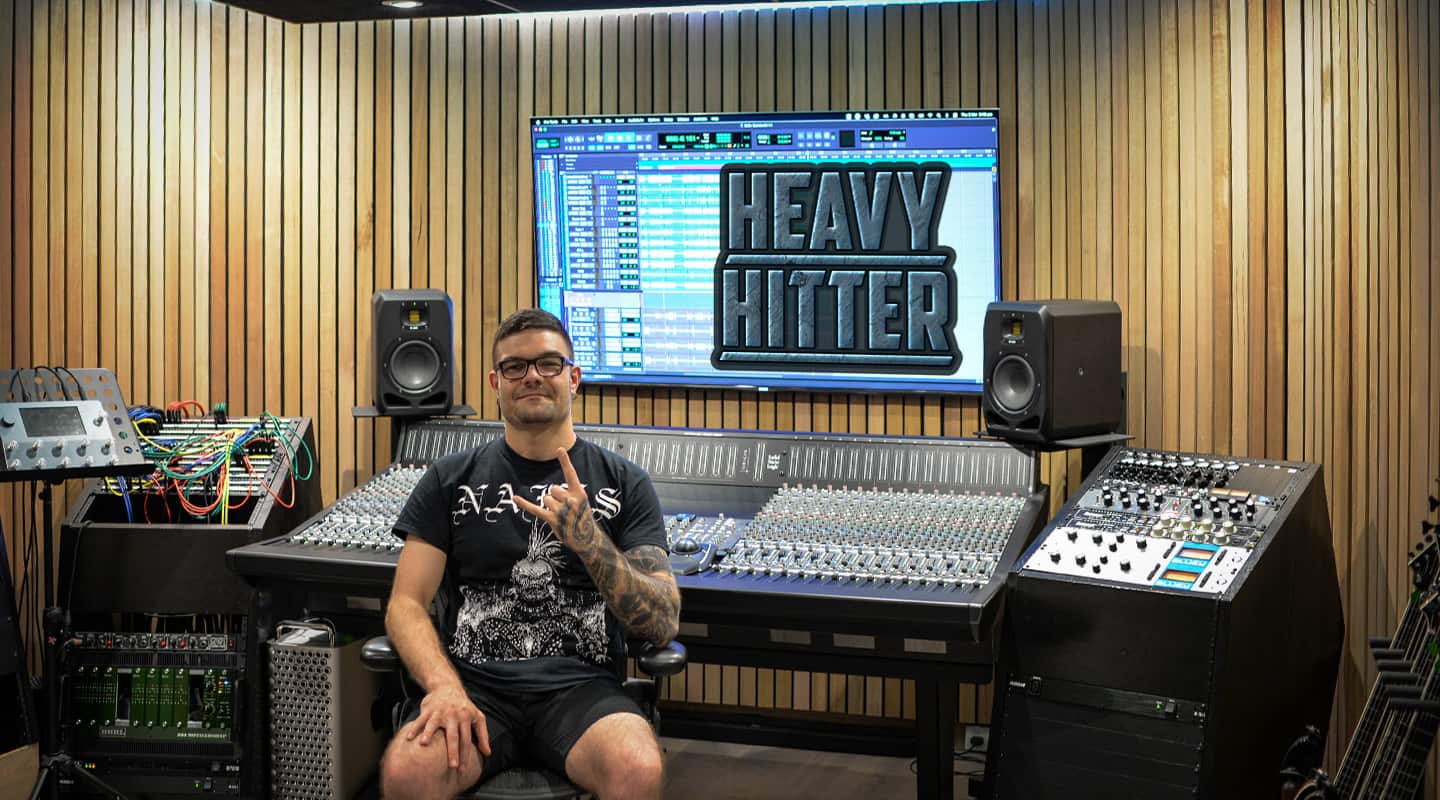
Heavy Hitter
Tristan Barnes’ Underland Studios in Melbourne is a stronghold for recording and mixing heavy music.
The arc of Tristan Barnes’ life and career was set early. He was obsessed with playing electric guitar and the heavy music scene as a teen. Then, as if to ‘burn the boats’ of a regular middle-class existence, he moved to Iceland as a 22 year old to immerse himself in heavy music and his passion for graphic art. Bad ass.
Into his 30s, Tristan pursued music production and mixing with diligence, vigour and hard work.
His Underland Studios in leafy Melbourne suburbia represents the textbook definition of a project studio — it’s designed to exclusively dovetail with Tristan’s preferred way of recording and mixing. The centrepiece of the space is an SSL Origin 32-channel mixing console.
KURT ANSWERS
Tristan’s workflow is somewhat idiosyncratic but also tailormade to his chosen genre and his band, Growth, where he and and his drummer brother act as the main songwriters.
“I’ve done a lot of homework and a lot of listening. There’s one hugely influential band, in particular, that’s shaped how I’ve gone about things. That band is Converge and (the band’s guitarist) Kurt Ballou has run a studio for around 20 years in Salem, USA. He started the studio because he wanted to support the local scene and give the band more control over its sound. He then became the go-to guy for a wave of bands. Kurt dedicated himself to self producing, and building his own gear. I’ve adopted that DIY ethic — playing, recording, mixing, producing, even taking care of the graphic art.”

GIVE IT A BURL
Underland Studios adopts a very contemporary in- and out-of-the-box approach: Tristan employs a Pro Tools HDX system, a chunky MacPro and UAD DSP to take care of the legwork and automation moves, while using the SSL Origin and its extensive patching capabilities to provide the summing, and stem mixing. In between Pro Tools and the SSL console is a Burl Audio B80 Mothership, which provides the conversion into and out of the box along with adjustable transformer-based flavour.
“Investing in the Burl Mothership was a big decision. I’m going for more of an organic, big sound and I want things to be very punchy and full, and not clinical. If you hit the Burl converters you do get some of that analogue transformer-based colouration. Back off and get a clean a sound if you want as well.”
WORKFLOW
Underland is a work in progress. The next key addition will be a drum room. Within the control room, Tristan records guitars and vocals using the SSL Origin preamps. “The preamps have a drive option, which I thought I’d lean towards, but I’m favouring the pure setting.”
The Origin’s 32 channel outputs are routed to Pro Tools via the Burl Mothership converters.
For monitoring, outputs from Pro Tools return to the SSL Origin via the Burl Mothership D/As.
The final summing of the mix exits the SSL Origin via two stereo stems — instrumental and an acapella mix. The vocals go through a BDA4M module on the Burl Mothership, while the rest of the mix is routed through the console’s mix-bus compressor. Both are printed back into Pro Tools.
The two-track master out of Pro Tools goes through a final transformer-led Burl Audio stage. “It’s like a final two-track tape recorder stage.”
It’s a workflow that allows Tristan to incorporate some choice items of outboard, including a Retro 2A3 tube EQ over the master bus. “It’s a broadbrush EQ that can sound heavy-handed if you overdo it. But it allows me to nudge the mix-bus lows and highs in a very musical way.”

LAYOUT
The layout of the console is entirely designed around Tristan’s desire to work efficiently and reproduce mixes without messing about too much. Anything that needs automation is all completed in Pro Tools (the Origin doesn’t feature automation or moving faders). Once it hits the mixing console, all the drum inputs are to the left of the centre section; guitars are to the immediate right; with vocals etc filling out the remainder of the 16 channels on that side.
Tristan relies on the Origin filters to give his mix an immediate advantage. He’ll often use the rest of the channel EQ rather than stare at a looping Pro Tools timeline for an hour.
The bulk of the time, Tristan will be sat in the sweetspot with fingers on the centre section faders, fine-tuning the balance of the VCAs and effects returns.
The ADAM Audio S2 nearfield two-way monitors aren’t worked too hard. Tristan keeps levels at a level you can talk over. For a genre characterised by distortion, and fast-paced guitar and drums exchanges, the task of the mix engineer is to ensure instruments don’t step on each other’s toes. It’s quite often a highly technical challenge as much as it is about feel. So, sure, Tristan might give the mix the occasional blast ‘for a vibe’, but otherwise he’s acutely aware of protecting his hearing.
ORIGIN STORY
Tristan’s band, Growth, released its debut album back in 2020 (on Wild Thing Records), peak pandemic. With plenty of time to reflect and write, Tristan and his brother Nelson have amassed a mountain of second-album material, which will be refined, recorded and released, probably early 2024.
The pandemic resulted in much-publicised chip shortages and supply chain woes, which meant Tristan had plenty of time to dream about the delivery of the SSL Origin. “I had about eight months to think about it, and read the manual cover to cover. That homework helped to flatten the learning curve when the desk was installed. It’s quickly become integral to my workflow and sound. I’d recommend people order the full SSL patchbay — it opens up a whole world of flexible routing.”
Underland: www.instagram.com/underlandrecordings

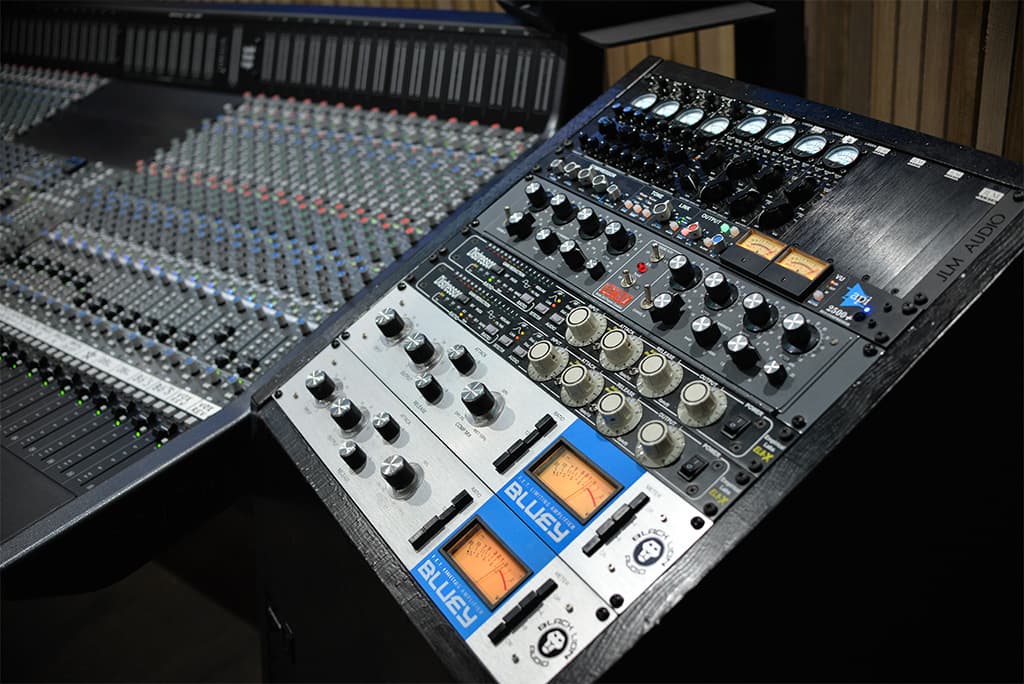







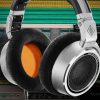








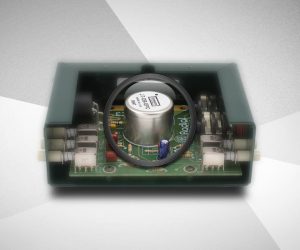
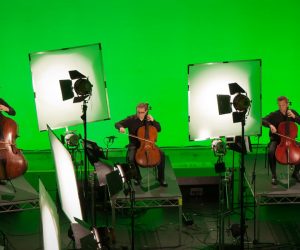








RESPONSES